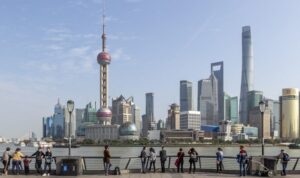To mark the 10th anniversary of the Belt and Road Initiative (BRI), the Confucius Institute of Colombo organized an international symposium on Sept. 27, 2023, held at the Bandaranaike Memorial International Conference Hall in Colombo, Sri Lanka. Following is the text of the presentation I made at the forum.
THE Belt and Road Initiative, I believe, constitutes a pivotal and transformative force that is poised to redefine and reshape the prevailing contours and dynamics of global geopolitics and the economic terrain, with particular resonance for the nations of the Global South, of which the Philippines is a part of, where its impact is profound and far-reaching.
The BRI is a visionary undertaking that transcends borders, cultures and ideologies. It is, without a doubt, one of the most ambitious and transformative initiatives of our time. Conceived by China but embraced by nations across Asia, Africa, Europe and beyond, it embodies the spirit of cooperation, connectivity and shared prosperity. It has evolved into a collaborative effort that spans continents, aiming to reshape the world’s economic and geopolitical landscape. In this context, I would like to underscore how the BRI holds the power to revolutionize the fortunes of the Global South and how it has the potential to be a true game changer for the developing world.
First and foremost, the BRI offers a lifeline of infrastructure development to countries that have long grappled with inadequate connectivity. Infrastructure development forms the backbone of this initiative, offering a lifeline to countries that have long struggled with inadequate transportation networks and energy access. Roads, railways, ports and energy projects are knitting together once isolated regions, creating trade, investment and growth pathways. This infrastructure surge translates into enhanced trade, investment and economic growth, elevating the economies of the Global South countries and fostering inclusive and sustainable development.
The BRI’s network of roads, railways, ports and digital connectivity enables goods and services to flow more freely, reducing trade costs and expanding business opportunities. This surge in trade can lead to economic revitalization and job creation, particularly in Global South countries.
Moreover, the BRI also catalyzes economic diversification. Many Global South countries have relied on a narrow range of industries or partners. By opening up new markets and fostering economic interdependence, the BRI lessens vulnerability to external shocks and fosters a more resilient economic landscape.
Furthermore, the BRI emphasizes cultural exchanges and people-to-people relations to foster mutual understanding and respect among nations. It encourages dialogue and collaboration, transcending political divides and promoting peaceful coexistence. This aspect of the BRI carries profound significance in a world where conflict is often rooted in misunderstanding.
In the arena of geopolitics, the BRI introduces a transformative shift. It challenges the conventional hegemonic structures and ushers in a multipolar world. For the Global South, this means a more prominent role on the global stage, where developing nations gain ground and have a greater say in shaping their destinies and forging strategic partnerships.
Some BRI successes
After a decade of implementation, the BRI has achieved several successes, primarily driven by various factors.
First, infrastructure development. The BRI has facilitated the construction of critical infrastructure projects, including highways, railways, ports and energy facilities, significantly improving connectivity between participating countries. These developments have boosted trade and economic growth.
Second, trade expansion. The BRI has fostered increased trade among participating nations by reducing transportation costs and enhancing logistics efficiency. This has led to economic benefits and improved access to global markets.
Third, economic growth: Many countries involved in the BRI have experienced economic growth and development driven by increased trade and investment. This growth has been particularly notable in Asia and parts of Africa.
Fourth, energy cooperation. The BRI has spurred collaboration in the energy sector, facilitating the development of clean energy projects, such as renewable energy installations and hydropower plants. This has contributed to sustainable energy solutions.
Fifth, cultural exchange. The BRI has promoted cultural exchanges and people-to-people connections, fostering greater understanding and cooperation among diverse cultures and nations.
Some of the factors that contributed to the success of the BRI include:
First, Chinese investment. China’s substantial financial commitment to BRI projects has been a significant driver of success. Its willingness to provide funding and resources has enabled the implementation of large-scale infrastructure projects.
Second, global connectivity. The BRI’s emphasis on enhancing connectivity aligns with the growing need for efficient transportation networks and digital infrastructure in an increasingly interconnected world.
Third, economic complementarity. The BRI brings together countries with complementary economies, creating opportunities for trade and investment that benefit all parties involved.
Fourth, policy coordination. Coordination among participating nations to align policies, regulations and standards has facilitated smoother implementation and trade facilitation.
Future prospects
Some of the factors, opportunities and challenges that may help shape the future prospects and road ahead for the Belt and Road Initiative concerning the evolving dynamics of the global landscape include:
1. Sustainable development. The BRI will likely focus increasingly on sustainable development, aligning with global efforts to address climate change and environmental concerns. This may involve a greater emphasis on green infrastructure, clean energy and environmentally responsible practices.
2. Digital Silk Road. As an extension of the BRI, the Digital Silk Road is expected to gain prominence. It involves building digital infrastructure, promoting e-commerce and fostering digital connectivity among participating countries.
3. Regional integration. The BRI may continue to promote regional economic integration, enabling countries to leverage their collective strengths and resources for mutual benefit. This could facilitate the development of regional value chains and enhance competitiveness.
4. Enhanced governance. Addressing governance and transparency issues will be essential for the BRI’s credibility and sustainability. Efforts to improve project transparency, anti-corruption measures, and social and environmental safeguards will likely continue.
5. Geopolitical considerations. The BRI will continue to navigate geopolitical tensions and concerns. It may seek to mitigate these challenges by emphasizing economic cooperation, cultural exchange and diplomacy.
6. Diversification of partnerships. The BRI may expand its network of partnerships beyond the traditional Asian, African and European regions to include more countries in Latin America and other parts of the world.
7. People-centric approach. An increasing emphasis on people-to-people exchanges, educational programs and cultural initiatives may enhance mutual understanding and promote stronger ties among participating nations.
8. Connectivity beyond physical infrastructure. Beyond physical infrastructure, the BRI could extend its focus to digital, financial and logistical connectivity to enable smoother cross-border trade and investment.
Conclusion
To conclude, the Belt and Road Initiative has achieved notable successes in infrastructure development, trade expansion, economic growth and cultural exchange. Undoubtedly, the Belt and Road Initiative can be a game changer in global geopolitics and economics for the Global South. It stands as a beacon of hope and opportunity for the countries of the Global South. It offers a pathway to development, diversification and more significant influence on the global stage. Indeed, the BRI serves as a beacon of hope and progress for all nations, regardless of their geographical location or economic status.



